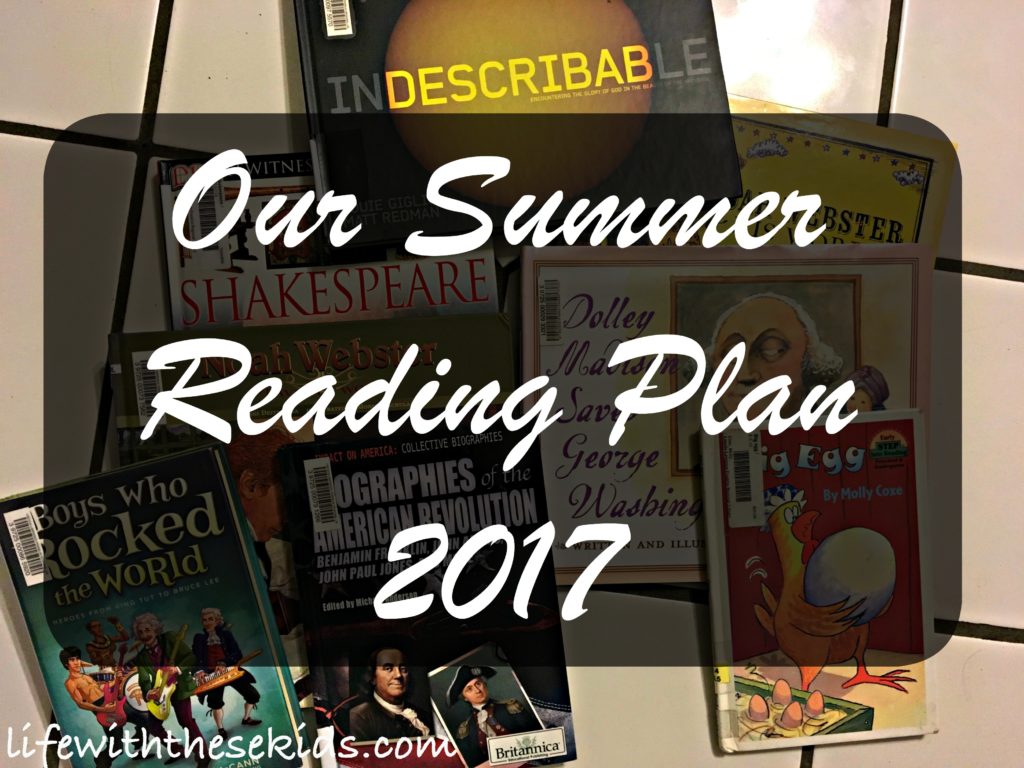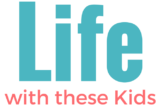Ever heard of the summer slide? The idea is that many kids will lose academic skills or slide backwards during the summer months if they aren’t consistently practicing those skills. We all know that the only way to improve a skill is to practice it, and reading is no exception. In fact, it may be one of those skills at the top of the list when it comes to requiring practice. And that is why I’ve come up with a Summer Reading Plan for our family.
Why Focus on Summer Reading?
In case you didn’t know, literacy is a big deal. It’s important for kids to read and to be read to even at a young age. The National Education Association reports that children that are read to 3-4 times a week do better academically than those whose parents don’t read to them. While I’m not super-interested in test scores, I do want to give my kids the best opportunities for a well-rounded education. I believe reading is central to that goal.
I want reading to be a priority for my family. Like anything else, if it isn’t scheduled on a regular basis, it’s likely to fall through the cracks. By establishing our own summer reading plan, we’re more likely to continue the habit of reading for learning and leisure.
I want my kids to know how to teach themselves, and this quote from Tomie DaPaola sums it up:
Why NOT Join a Summer Reading Program?
We have enjoyed our library’s summer reading program in years past. Last year, we didn’t do a very good job at making it to the library for reading lists to be checked. Some of my kids have “aged out” of the program too.
I don’t see this summer being any less hectic than last year, so I decided we’d follow our own program. This way, our program can be tailored to each child’s reading level, personal interests, and academic goals.
For instance, I know what we studied in the last school year. I know what we’ll be studying in the coming year. I can point my crew to books that reinforce what they’ve recently learned. Or I can point them towards titles that will introduce concepts and ideas that we’ll soon be studying in our regular school time.
Online Summer Reading Programs are a good option, but again, I know we’ve got a busy summer ahead of us, and I doubt we’d be diligent to “check in” regularly, even with an online program. If you’re interested, The Balance has written an article compiling several online summer reading program options.
Our Summer Reading Plan
Book Basket
Just like during the school year, I’ll choose the titles for our Book Basket. Each kid will be required to read from the Book Basket for at least 30 minutes daily (during the week, on days that we’re home). The choice of which books to read is completely up to the individual kid. These titles will include fiction and non-fiction based mostly on what we have studied or will soon study together.
Book List
I’ve compiled a list of suggested books for each kid to read, and the goal is to read 3 of them this summer. They get to choose which 3 from the lists I’ve compiled. They can read as much or as little as they choose. There is no time requirement or limit.
I created the lists based on each one’s current reading level and personal interests. I try to be careful and add books that won’t have objectionable content or content that would be counter to our family’s beliefs and convictions which can be summed up in Philippians 4:8 (NIV),
“Finally, brothers and sisters, whatever is true, whatever is noble, whatever is right, whatever is pure, whatever is lovely, whatever is admirable—if anything is excellent or praiseworthy—think about such things.”
I used many online sources to come up with good summer reading lists, including:
- Ambleside Online: a free online Charlotte Mason resource
- Our local public school summer reading lists: a good resource because the library usually has their suggestions available
- Sonlight: a literature-based curriculum known for its great titles
- My Father’s World: a Charlotte Mason style curriculum that we’ve used in the past
- Five in a Row: our favorite elementary curriculum, Charlotte Mason-inspired, literature-based
And finally, I selected books that were either already available on our bookshelves or at the local library.
Our Book Lists
(Disclaimer: This post contains affiliate links which means I may receive a small commission if you make a purchase through a link at no additional cost to you.)
AJ13 (girl, dyslexic reader)
- The Incredible Journey by Sheila Burnford
- The Railway Children by Edith Nesbit (FREE on Kindle)
- The Borrowers by Mary Norton (FREE on Kindle)
- Sarah, Plain and Tall by Patricia MacLachlan
- The Story of My Life by Helen Keller
- Animal Farm by George Orwell
- Amos Fortune, Free Man by Elizabeth Yates
- Dear Mr. Henshaw by Beverly Cleary
- Caddie Woodlawn by Carol Ryrie Brink
- Skylark by Patricia MacLachlan
CD12 (boy, average reader)
-
- Amos Fortune, Free Man by Elizabeth Yates
- Stone Fox by John Reynolds Gardiner
- The Incredible Journey by Sheila Burnford
- Animal Farm by George Orwell
- Encyclopedia Brown, Boy Detective by Donald J. Sobol
- Old Yeller by Fred Gipson
- The Whipping Boy by Sid Fleischman
- The Adventures of Tom Sawyer by Mark Twain
- Farmer Boy by Laura Ingalls Wilder
- The Rescuers by Margery Sharp
AC10 (girl, average reader)
- Alice’s Adventures in Wonderland by Lewis Carroll
- The Bears on Hemlock Mountain by Alice Dalgliesh
- Charlotte’s Web by E.B. White
- Stuart Little by E.B. White
- The Borrowers by Mary Norton
- The Littles by John Lawrence Peterson
- Strawberry Girl by Lois Lenski
- The School Story by Andrew Clements
- The Incredible Journey by Sheila Burnford
- The Story of My Life by Helen Keller
AG8 (girl, 1st-2nd grade reading level)
- How Not to Start 3rd Grade by Cathy Hapka
- Zin, Zin, Zin, A Violin by Loyd Moss
- A Girl Named Helen Keller by Margo Lundell
- Starfish by Edith Thacher Hurd
- Peter Pan by James M. Barrie
- The Velveteen Rabbit by Margery Williams
- Frog and Toad are Friends by Arnold Lobel
- Shoeshine Girl by Clyde Robert Bulla
- Ramona Quimby, Age 8 by Beverly Cleary
- Sweet Clara and the Freedom Quilt by Deborah Hopkinson
In my opinion, reading levels are only a guide. I refuse to eliminate good books just because they aren’t on a child’s exact reading level. I chose books on, above, and below each child’s actual reading level.
You’ll also notice that I haven’t set up some elaborate reward system. The story itself will be the reward. My goal is to encourage my children to become lovers of the written word.
So what about you? What do you do to avoid the “summer slide”? Do you have a summer reading plan, or do you do something completely different? I’d love to hear your thoughts in the comments below.
















